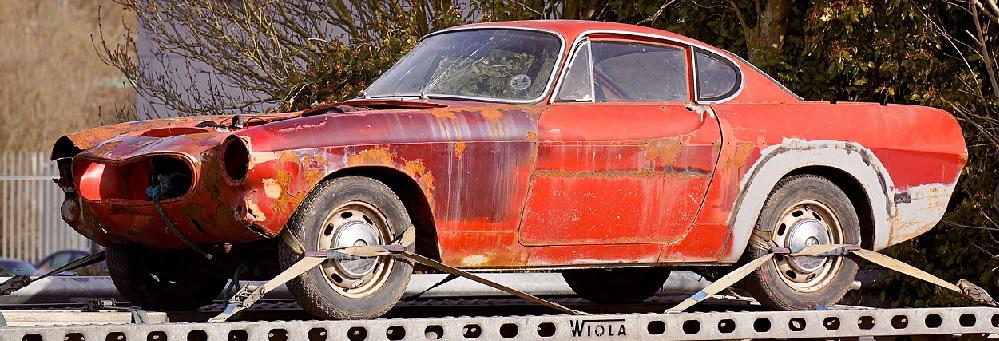
Body Repair Basics....
Small repairs can be painted satisfactorily using aerosol paints, which are usually cellulose paint. This has been thinned a little more to work properly at the pressure provided by the canister.
The other alternative to consider is paying a suitably equipped bodyshop to apply the paint after the preparation work has been completed. As most of the cost of a professional repair will be labour charges, quite a large amount of money can be saved this way. Preparation can easily account for 75% of the time involved. Remember, though, that faulty preparation will not be hidden by coats of paint!
Professional bodyshops use power tools which speed up the repair process, but most stages of a repair can still be completed by good old fashioned hard work. It just takes longer. Many bodyshops and coachbuilders will finish all flatting by hand anyway to guarantee a perfect finish.
Metallics & lacquers

Most recent metallics are of the clear-over-base type, which involves a coloured metallic basecoat protected by a finishing coat of clear lacquer. Metallics can show a wide variation in colour dependent on application techniques.
Metallic paints need a bit more care and a slightly different spraying method, but invisible repairs can be accomplished by following our metallic spraying guide.
The first thing that most people notice on repaired cars is a bad match!
Here you can find the methods used by professionals to ensure an absolutely perfect colour match: Blending Colours
-
DIY Car Body Repairs - save money!!
Carsprays is a general purpose guide for anyone considering d.i.y car repairs, who have access to fairly basic tools. High labour charges and insurance excess payments make even small car repairs an expensive item to budget for, especially in today's economic climate.
Metallic paintwork, colour matching and blending all add their own problems to even a minor scratch or dent, but there is no magic involved!
Save money!
Why not investigate the possibility of repairing your own car and save some money? Even minor damage, such as a scratched wheel arch, may result in a garage invoice in excess of £200. The raw materials for the repair will be a fraction of that.
If your car or van is several years old, paying for a 100% perfect professional result may actually be wasting your money. You are probably more than capable of carrying out a completely acceptable job by following the guidelines on this website 🙂
Special Cautions!!
Modern cars are becoming more complex, mechanically, electronically and even bodywork. At one time cars were made from mild steel with perhaps some plastics added for ornamental reasons. Now many body components are made from high tensile steel, complex alloys and a formidable range of composite and plastic parts.
Sensors, cameras and other electronic computer related components may be fitted in, around or behind many body sections or glass, especially at the front and rear. These may need to be recalibrated after any repair to enable them to work safely as intended - or even to work at all.
The repair methods detailed here apply to conventional (mild steel and fibreglass) vehicle construction, and non-structural plastic components such as bumper covers and spoilers. Paintwork thankfully is still a fairly universal process, but even then some complex coating materials and application methods may be required on later vehicles.
In brief: make sure you can complete any repair you start, as this website is for guidance only. The outcome of any repair project is in your hands, and no responsibility can be taken by Carsprays for lack of the required skills!

